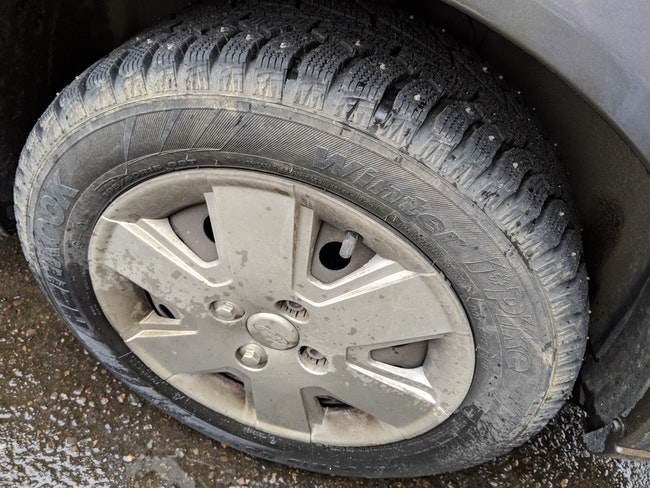It may be snowing now, but Oregonians have one week to remove their studded tires or face a fine.
The deadline to remove studded tires from your vehicle is Friday, March 31, Washington County Land Use and Transportation said.

“Driving on studded tires out of season in Oregon can get expensive. Not only can they damage roads, but they can also get you a $165 fine,” the county’s road department said March 17.
“If it snows after April 1, drivers can still use chains, snow-approved all-season tires or other traction devices,” the department added.
ODOT says studded tires over time cause major damage to local, county and state roadways. A 2014 study conducted by the state agency concluded that studded tires cause about $8.5 million in damage each year to Oregon roads, highways, and freeways.
Options for tires without studs
There are other types of tires available to drivers who wish for an alternative to studded tires or chains — traction wheels that meet the Rubber Manufacturers Association (RMA) standards for use in snow, ice and other types of severe winter weather conditions.
RMA research shows that alternative winter traction tires, easily recognizable by an emblem of a three-peaked mountain depicting a snowflake in the center, cause no more damage to roadways — as opposed to standard studded tires or chains — than typical, all-weather radial tires.
One issue RMA research found — an all-too-familiar outcome recognizable to drivers who regularly use Interstate-5 in the Willamette Valley — shows that studded tires eventually chip away at asphalt, cutting grooves into the roadway that during rainstorms fill with water to create a hydroplaning hazard.
Bridgestone Tires—which is not an advertiser in this publication—states on its website that advances in rubber compounds, tread design, and other winter tire technologies lead to the creation of modern studless snow tires for use in freezing temperatures that are capable of maintaining flexibility.
The increased flexibility in the non-studded tires’ rubber, which has deeper tread depths than “all-season” or “summer” tires, allows drivers to maintain traction on wet, snowy and icy road conditions. During winter months, the rubber in these newer studless tires packs snow within the tread blocks, providing for snow-on-snow, better traction. Studless tires also contain tiny grooves, called sipes, within each tread pattern that provide “biting edges on ice that help with “acceleration, deceleration, and stopping,” Bridgestone’s website says.
Driving on studded tires after March 31 may result in fines
“Drivers with studded tires on their vehicles after the March 31 deadline can be charged by law enforcement with a Class C traffic violation,” ODOT spokesperson Peter Murphy said in 2019, and the same is true today. “If you must travel when weather conditions present difficulties after March 31, use other types of traction tires or chains, or postpone your travel until conditions change for the better,” he said.
“With spring break starting this weekend the mountain passes present particular concern for ODOT maintenance crews with vacationers heading to the Oregon Coast or the Cascades. ODOT crews will be working around the clock to keep the road safe,” ODOT said Thursday.
For the latest Oregon road conditions go online to www.TripCheck.com or call 5-1-1.
For more information about the evolution of winter tires go online to trade magazine-website https://www.moderntiredealer.com

Chas Hundley is the editor of the Gales Creek Journal and sister news publications the Banks Post and the Salmonberry Magazine. He grew up in Gales Creek and has a cat.







